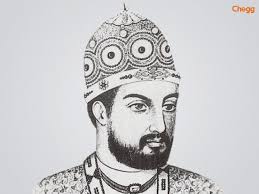Alauddin Khilji, one of the most powerful Sultans of the Delhi Sultanate, died in 1316. His death triggered a turbulent period marked by intense power struggles within the Khilji dynasty. The central figure during this transitional phase was Malik Kafur, Alauddin’s trusted general and close confidant. Although Malik Kafur played a crucial role in the administration during Alauddin’s reign, he did not seize the throne directly.
After Alauddin’s death, Malik Kafur sought to consolidate power by placing Shihabuddin Omar, Alauddin’s young son, on the throne. Given Shihabuddin’s youth, Malik Kafur effectively became the regent, wielding significant influence over the court and administration. His ambition to control the Sultanate, however, was met with opposition from other powerful factions within the Khilji nobility.
Shihabuddin Omar’s reign was extremely short-lived, primarily due to his tender age and the lack of support from influential nobles. The internal dissent and power struggle among the nobles created an unstable environment, which ultimately led to the downfall of both Shihabuddin and Malik Kafur.
The turning point came when Qutb-ud-Din Mubarak Shah, another of Alauddin Khilji’s sons and a prominent noble, gathered support from a rival faction. Mubarak Shah’s faction was strong enough to challenge Malik Kafur’s authority. In a swift coup, Malik Kafur was captured and executed, ending his brief dominance over the Sultanate.
Following Malik Kafur’s downfall, Qutb-ud-Din Mubarak Shah ascended the throne. His rule marked a new phase for the Khilji dynasty. Mubarak Shah attempted to stabilize the Sultanate, but his reign was also marked by intrigue and political machinations. Despite his efforts, the stability of the empire continued to be challenged by internal dissent and external threats.
Mubarak Shah’s reign, although longer than his predecessor’s, could not restore the former glory of Alauddin Khilji’s rule. The Khilji dynasty eventually succumbed to internal fragmentation and was replaced by the Tughlaq dynasty after Mubarak Shah was assassinated in 1320.
This period of instability following Alauddin Khilji’s death highlights the vulnerabilities of dynastic succession in medieval India, where power struggles and factionalism often dictated the fate of empires. Malik Kafur’s ambitions, though significant, were short-lived due to the complex dynamics of court politics and the emergence of stronger rivals like Qutb-ud-Din Mubarak Shah.







